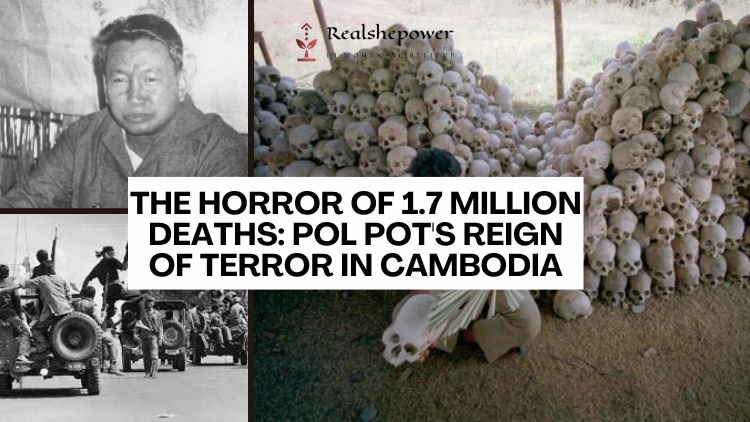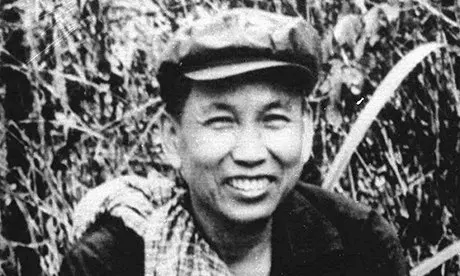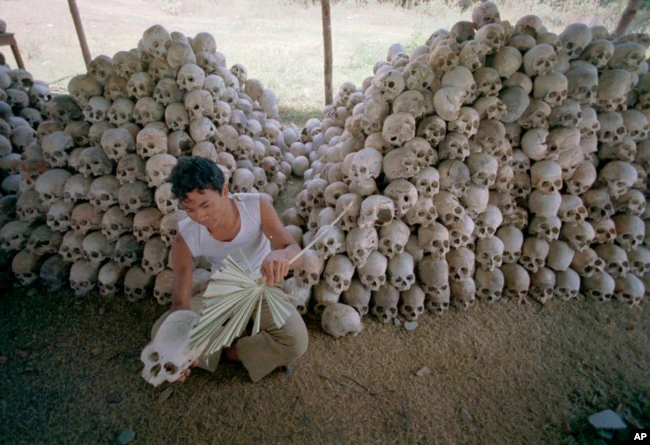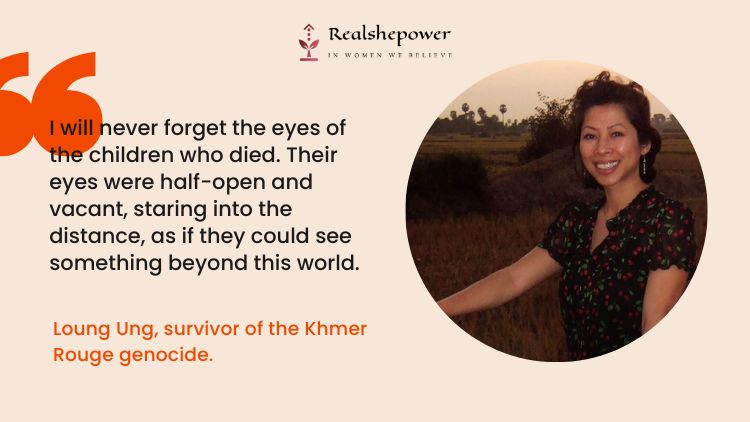Khmer Rouge Killing Fields: A Brutal Reign of Terror in Cambodia


On April 16th, 1975, the world watched as the Khmer Rouge, led by Pol Pot, took control of Cambodia. The regime that followed was one of the most brutal and genocidal in modern history, leading to the deaths of an estimated 1.7 million people through execution, forced labor, and starvation. Here is a detailed look at the rise of Pol Pot and the Khmer Rouge, and the devastating impact they had on Cambodia.
Table of Contents
The Early Years of Pol Pot

Pol Pot, whose real name was Saloth Sar, was born in 1925 in a small village in Cambodia. He was educated in the capital city of Phnom Penh, where he became involved in leftist politics and joined the underground Communist Party of Indochina. After completing his education in France, Pol Pot returned to Cambodia in the 1950s, where he became a teacher and continued his political activities.
In the 1960s, Cambodia was drawn into the conflict in neighboring Vietnam, and Pol Pot emerged as a key figure in the communist movement in Cambodia. In 1968, he became the leader of the Communist Party of Kampuchea, which later became known as the Khmer Rouge.
The Rise of the Khmer Rouge
In 1970, the Cambodian government was overthrown in a coup led by General Lon Nol, who established a pro-American regime. The Khmer Rouge, with support from Communist China and North Vietnam, launched a guerrilla war against the Lon Nol regime, gaining control of large parts of the country by 1975.
On April 17th, 1975, the Khmer Rouge took control of Phnom Penh, and Pol Pot became the leader of Cambodia. The country was renamed Democratic Kampuchea, and Pol Pot declared that his goal was to create an agrarian utopia, free from the corrupting influences of modern society.
The Reign of Terror

Under Pol Pot’s leadership, the Khmer Rouge implemented a radical program of social engineering. Cities were emptied, and the population was forced to work in the countryside as part of a massive agricultural project. Schools, hospitals, and other institutions were closed, and religion and traditional culture were outlawed. Anyone suspected of being an intellectual, or having ties to the previous regime, was rounded up and sent to one of the regime’s notorious “re-education” camps.
The conditions in these camps were horrific. Prisoners were subjected to torture and forced labor, and many died from starvation, disease, or execution. Even those who were not sent to the camps were not safe. The Khmer Rouge implemented a policy of “auto-genocide,” in which anyone suspected of disloyalty was executed, along with their entire family.
The Legacy of Pol Pot and the Khmer Rouge
The reign of Pol Pot and the Khmer Rouge came to an end in 1979, when Vietnam invaded Cambodia and overthrew the regime. Pol Pot and other Khmer Rouge leaders fled to the jungle, where they continued to fight a guerrilla war against the Vietnamese-backed government.
Pol Pot died in 1998, without ever facing justice for the crimes he committed. However, in recent years, the international community has made efforts to hold the Khmer Rouge accountable for their actions. In 2001, the Khmer Rouge Tribunal was established, and several senior Khmer Rouge officials have been tried and convicted for their role in the genocide.

The legacy of Pol Pot and the Khmer Rouge is a tragic one. The regime’s policies led to the deaths of millions of Cambodians, and the scars of that period still linger today. However, the legacy also serves as a reminder of the dangers of totalitarianism and the importance of preserving human rights.
Lessons Learned from the Khmer Rouge
The rise of Pol Pot and the Khmer Rouge is a stark reminder of the dangers of extremism and totalitarianism. It shows how a group with a utopian vision can become a brutal regime that commits unspeakable atrocities. The Khmer Rouge also serves as a reminder of the importance of human rights and the need to protect the most vulnerable members of society.
In recent years, Cambodia has made progress in recovering from the legacy of the Khmer Rouge. The country has seen significant economic growth and political stability, and there have been efforts to promote reconciliation and justice for the victims of the genocide. However, there is still much work to be done, and the legacy of Pol Pot and the Khmer Rouge will continue to shape Cambodia for years to come.
Conclusion
The rise of Pol Pot and the Khmer Rouge is a tragic chapter in Cambodia’s history, and one that has had a profound impact on the country and its people. The regime’s policies of forced labor, execution, and starvation led to the deaths of millions of Cambodians, and the scars of that period still linger today.
However, the legacy of the Khmer Rouge also serves as a reminder of the dangers of totalitarianism and the importance of preserving human rights. It is a reminder that we must always be vigilant in protecting the most vulnerable members of society and standing up against extremism in all its forms.
As we continue to reflect on the legacy of Pol Pot and the Khmer Rouge, we must also look to the future and work towards building a world where such atrocities can never happen again. By learning from the past, we can strive towards a better future for all.
Resources
- “First They Killed My Father: A Daughter of Cambodia Remembers” by Loung Ung, a memoir of her experiences surviving the Khmer Rouge regime.
- “The Killing Fields” (1984), a movie based on the experiences of journalist Dith Pran during the Khmer Rouge regime.
- Documentation Center of Cambodia, an organization that researches and documents the atrocities committed by the Khmer Rouge.
